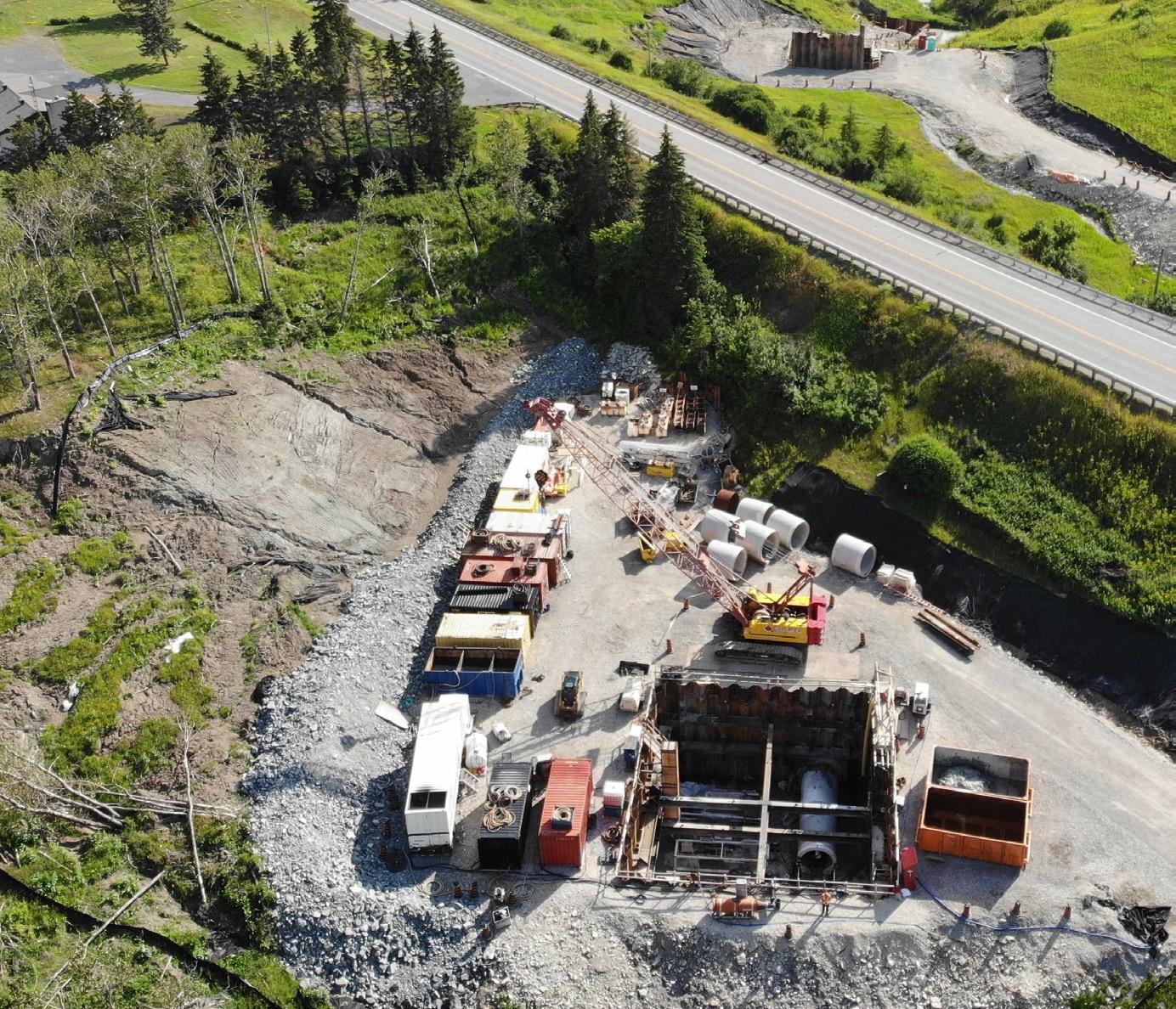
2 minute read
Microtunnelling used for twin culvert replacement project
By Nicholas MacEachern
Harbourside Engineering Consultants (HEC) was retained by Construction Demathieu and Bard Inc. (CDB) to develop the structural design and temporary construction work designs required for the Calamity Creek Culvert Replacement Project, just north of New Liskeard, Ontario.
The purpose of the project was to replace and decommission an existing cast-in-place reinforced concrete, single cell box culvert having a cross section of approximately 3.05 m wide x 2.45 m high and running 270 m long.
The existing structure was situated up to 8 m below the grade of the roadway, which added to the project’s challenges. The Ministry of Transportation of Ontario (MTO) project documents specified twin 2.1 m inside diameter (I.D.) pipe culverts to meet the predetermined hydraulic capacity requirements. The MTO contract also required that the project be completed without causing significant disruptions to the traffic along Highway 11.
Forterra Pipe & Precast Ltd. recommended that the concrete microtunnelling pipe be produced using the “drycast” process, which allowed for higher production rates compared to the specified “wetcast” process.
The pipe segments were designed with a typical microtunnelling joint comprised of a 13 mm thick galvanized steel ring. In addition to the steel endring, the joint also featured a confined tapered profile gasket that provides a hydrostatic capacity of 30 psi. Forterra’s engineering team provided the structural designs for the pipe, which were reviewed and accepted by Harbourside Engineering and the MTO.
The 2.1 m microtunnelling pipe also needed to meet several quality assurance and certification standards, including the requirements of the Canadian Precast Concrete Quality Assurance (CPCQA) certification program.
Pipe segments were also assessed using the requirements of the D-Load test and hydrostatic test, which were performed by Forterra at their manufacturing facility. The D-Load (or Three Edge Bearing test – 3EB) is a physical test used to ensure the pipe will provide the required structural capacity.
CRS Tunnelling Inc. was retained for this project and chose an earth pressure balance tunnel boring machine (EPBTBM) to complete the work. It allowed for soft, wet, or unstable ground to be tunnelled safely with speed. This EPBTBM was equipped with face control doors and chamber access in case the crew needed to go into the cutting head chamber for maintenance or inspection. The latter proved important as it hit a major underground obstacle of wood debris during the first drive.
The twin pipe culverts were installed in two drives. Each drive would run the entire 270 m length. As mentioned above, the project did encounter a delay during the first drive. This resulted in the second drive occurring during the winter months, with some temperatures hitting as low as -40°C. Both the concrete microtunnelling pipe and the EPBTBM continued to operate throughout these conditions.
The second drive broke through the receiving shaft on December 12, 2019. The project, which included the decommissioning of the existing culvert was completed in October 2020. Reprinted from the Canadian Concrete Pipe and Precast Journal, Fall 2021.
Aerial view of the Calamity Creek Culvert Replacement Project.










